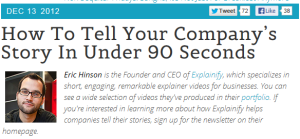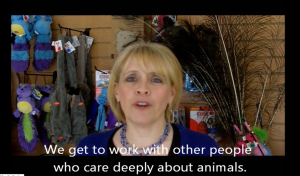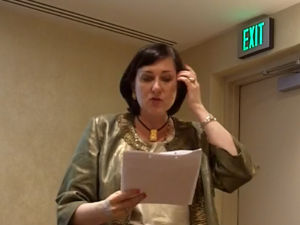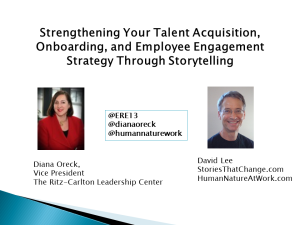The Secret of the “Story Premium” in Marketing: Guest Post by Andrew Nemiccolo
How Stories Increase the Perceived Value of Your Offer
Guest post by Andrew Nemiccolo of Seven Story Learning
This past week, my mother visited us in California from the East Coast. With a superb memory and deep interest in genealogy, Mom is a treasurer of family history.
 Around the dinner table last weekend, she told stories of her immigrant Swedish grandmother who was an accomplished seamstress living with the wealthy Guggenheim family in New York city. Another night, Mom shared how the Japanese lacquer miso soup bowls we were eating from had come into the family. The wooden bowls were purchased in Asia by her father who remained in the Navy in the Pacific through 1946. As a young girl, my mother described how she would play house with these “exotic” items he had brought back to New England.
Around the dinner table last weekend, she told stories of her immigrant Swedish grandmother who was an accomplished seamstress living with the wealthy Guggenheim family in New York city. Another night, Mom shared how the Japanese lacquer miso soup bowls we were eating from had come into the family. The wooden bowls were purchased in Asia by her father who remained in the Navy in the Pacific through 1946. As a young girl, my mother described how she would play house with these “exotic” items he had brought back to New England.
After we heard that story, I noticed my kids pausing, looking, and beginning to pay more attention to the bowls they had eaten from, without much thought, so many times before. Knowing the connection to their great-grandfather and Japan (a country they have been fortunate to visit) made the lacquerware much more meaningful for them. More than a simple container for food, the bowls now represent a thread from the past to the present.
Calculating the Story Premium
This blog post isn’t only about family keepsakes, though. It’s about how stories can bring tremendous value and meaning in the business world, too. But exactly how much return on investment do stories offer?
In 2009, Joshua Glenn and Rob Walker, the founders of the Significant Objects project, tried an experiment to calculate the “story premium.” They wanted to see how much value interesting backstories would contribute to the random objects.
They purchased 100 inexpensive items like coffee mugs and pepper shakers at thrift stores at a dollar or so each, for a total of $128.74. Then they recruited writers to create interesting fictional backstories about the origins of each item, before selling the items on eBay. (Bidders were clearly told that the stories were fictional and that all proceeds would be donated to charity.)
When everything was totaled up, the 100 objects had brought in an astonishing $3612.51 in winning bids, for a 28X return on investment. Glenn and Walker pointed out, “Stories are such a powerful driver of emotional value that their effect on any given object’s subjective value can actually be measured objectively.”
The Business of Stories
While Significant Objects wasn’t a scientifically valid study, an astonishing 2800% return is definitely something worth paying attention to. If you sell a product, are you engaging customers with the story of the product? Or are you merely overwhelming their brains with all the technical features of your gizmo?
And this isn’t just about stories augmenting the value of physical objects like the products you design and sell. Stories work in the service business, too.
If you run a service business or provide a client experience, you know that the potential value of stories is even greater in this case. After all, with no physical product as a reminder, it is the memory of the story that will linger long after the service itself has ended.
World class organizations like the Ritz Carlton reinforce exceptional customer service with their WOW stories, told at daily stand-up meetings at their properties across the globe. They recognize that their customers aren’t just renting a bed for the night—they are looking for a meaningful experience—and are willing to pay a premium for it.
Stories work well because they combine logical and emotion. When you look at your organization, do you only complete projects, or do you also deliver memorable client experiences?
As Dan Pink wrote in A Whole New Mind, “Story is having another important impact on business. Like design, it is becoming a key way for individuals and entrepreneurs to distinguish their goods and services in a crowded marketplace.”
When you think of it that way, sharing stories is serious business!
Now Apply the Story Premium
Imagine how you can release the power of story to distinguish your business in a crowded marketplace.
Review your company history, past projects, and successes. Even be so bold as to look at how you’ve recovered from failures. What about your future plans? I call this process StoryMining. Are there additional opportunities to share stories inside and outside your organization?
Here are Four Types of Stories to Get You Started:
- Origin stories for your “About Us” page. How did you get started? What made you want to get into your line of work? What challenges did you overcome? Have you encountered forks in the road along the way?
- Stories of employees going the extra mile. Forget the corporate manual and bland mission statements on the wall. What does great customer service really look like?
- Product or service stories. What is the backstory of the inspiration behind your newest offering? People love gaining insight into the creative design process.
- Client success stories. Let your clients tell, in their words, how your product or service helps them. Clients are more credible and often know your solutions better than you do.
So go ahead! Leverage the emotional impact of story. People will remember these kinds of stories long after your latest brochure, power point slide, or “service specification sheet” fades from their minds.
 Andrew Nemiccolo is founder of Seven Story Learning and author of Aizuchi Playbook: Brand Your Business with Story. Andrew gives talks and workshops on stories for business and develops client success stories into B2B marketing content. For more resources, visit http://sevenstorylearning.com and connect on twitter or Facebook.
Andrew Nemiccolo is founder of Seven Story Learning and author of Aizuchi Playbook: Brand Your Business with Story. Andrew gives talks and workshops on stories for business and develops client success stories into B2B marketing content. For more resources, visit http://sevenstorylearning.com and connect on twitter or Facebook.









